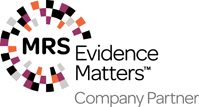As a former client-side researcher in a FTSE 250 company I know market research departments spend the lion’s share of their annual budget on customer and brand tracking projects. Often the questions remained unchanged for years and although they may no longer deliver the value the business need, the majority senior managers are hesitant to change their approach.
Most of the time a new bar is added to the tracking chart and no one really knows why it has gone up, down or stayed the same. The agency charged with the research and the internal research team spend the majority of their time making sure the sample is robust and figures are thoroughly audit checked, just in case the MD needs to pull out some of the satisfaction figures for a last minute press interview. There is little thought to what the results actually mean to the business and how the feedback can be implemented to improve satisfaction, loyalty and advocacy (the keys to growing any business). In truth there is a wealth of information at our finger tips, but rarely is this insight unlocked.
Making an impact
One the advantages to running long term tracking projects is that they deliver large robust sample sizes when considered from an annual point of view. A customer tracker which is completed by just 200 customers per month yields an annual sample size of almost 2,500 responses. This opens the data up to lots of interesting and useful analysis techniques which can help maximise the impact of the research and breathe new life into tracking studies.
At Robust Insight we consider this type of data gold dust and encourage all our clients to think about an annual analysis review of their survey responses. Some of the most interesting analysis methods we have used to date include:
Sub group analysis
We consider the most important sub groups in your sample and then cut the data to unlock the distinctions between each group. These may include gender, age, income, number of children, employment status and regional location. That way we can identify who your most satisfied customers are and who you need to put extra effort into to increase their satisfaction ratings. After all one-size does not fit all and it would be surprising to think that housewives living in the north valued the same experiences as bankers working in London.
Key driver analysis
Most tracking studies include large banks of matrix style likert questions. They ask respondents to rate their experience with different touchpoints in the business which usually cover areas around products, customer service and brand. We use these as independent variables and create a regression model to identify which are the most important drivers of the dependant variable (usually satisfaction, advocacy or loyalty). By identifying what drives satisfaction we can then start to think about how the business can prioritise its activities to increase future scores.
Impact matrixes
These are by far and away our most popular slides in any presentation. We map touchpoint satisfaction and key driver importance to uncover underperforming areas which are important in driving satisfaction. This gives us the confidence to recommend these as key improvementareas in the customer experience to maximise satisfaction.
Segmentation
We can also take into account all different questions types in the survey to identify 3-5 distinct groups of respondents. We include demographic and attitudinal questions to pinpoint differences between groups and then makerecommendations on how the business can better market to and engage these types of customers. For example we may identify a segment who are feeling particularly confident about their incomes rising over the next 12 months, so we may want to consider upselling other products and services to this group.
Text analytics
Comments from open-ended questions remain some of the most underutilised data sources in any survey. At best most agencies manually code the comments and provide frequencies with no more depth than could be achieved froma multiple choice question. We use the latest text analytics software to code comments in themes (e.g. products) and sub themes (e.g. range, quality). We then analyse the sentiment attached to each theme which allows us to understand how positively or negatively each theme was talked about. We also link the comments to structured data in the questions e.g. demographics or satisfaction levels. Finally we identify key improvement areas based on the comments and link them to the other forms of analysis shown above.
Conclusion
Breathing life into tracking studies gives an internal market research team something to boast about in an organisation where each department is fighting for attention and extra budget. The results can be presented at events and roadshows to help the rest of the business understand how customers feel. Since I have been running these annual analysis reviews I have seen senior management take more notice of market research and often commission follow up projects or boost sample sizes.
To find out more about how Robust Insight can help your business please contact us.
Scott Owens CMRS Dip (MRS) BA (Hons)
Robust Insight Limited
Regent's Court, Princess Street, Hull, HU2 8BA
Website: www.robust-insight.co.uk
Email: This email address is being protected from spambots. You need JavaScript enabled to view it.
Tel: 01469 640558
Mob: 07825 269235
Skype ID: scott1895







